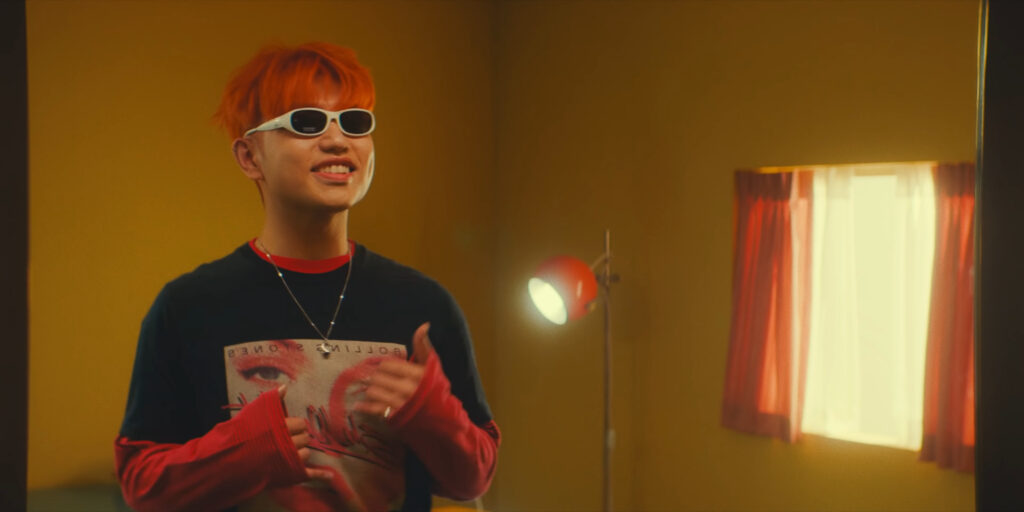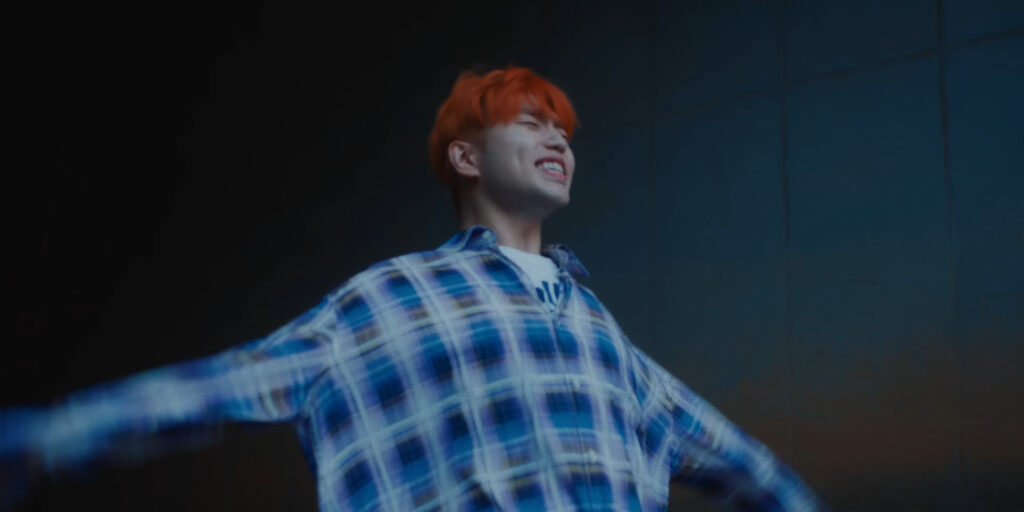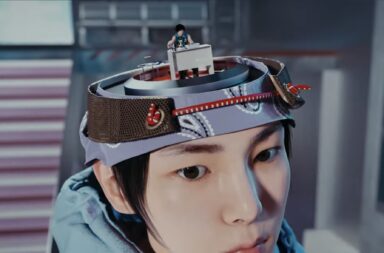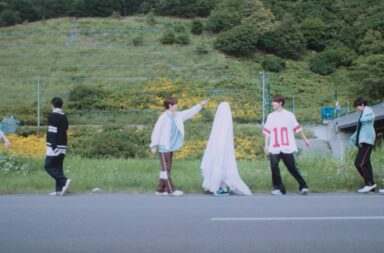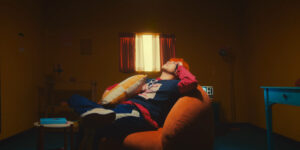
Jointly written by Sam Kim and Simon Petrén, “The Juice” is an upbeat funk song that boasts rich instrumentals, deftly playing with rhythms and melodies. The MV, directed by Lee Inhoon (who is no stranger to Sam’s MVs), aptly complements the music style with a vivid, bright color scheme. At first glance, “The Juice” is just that: a fun song to groove to. But closer inspection reveals a more complex message about being stuck in a funk, told in a nuanced yet fun way.
The song starts out with Sam muttering “I just had it” in a defeated manner, a possible nod to the tumultuous song-writing process as suggested by commentary channel ReacttotheK. The skit-like quality of these opening lines sets the tone of the song, drawing listeners in as if they are privy to Sam’s personal thoughts. In fact, this conversational writing style is sprinkled throughout the song, where both sides of the exchange are acted out.
First off, we hear the backhanded comments about Sam’s image, underscored symbolically by mirrors in the MV. While he appears goofily happy with his sunglasses on, even pulling a one-man ballroom dance at one point, the underlying frustration begins to show once the shades are off and the walls start closing in. The narrative then continues with Sam escaping from the room.
The outside world, while considerably duller with its cool tones and greenery, offers a stark contrast to the room that Sam was just in. The room’s bright and cheery color palette suddenly feels saccharine in comparison. It feels constructed and suffocating, in contrast to the outside world’s freely growing greenery. Out in the open, finally free, Sam shows a wide smile for the first time. With the visuals alone, the MV suggests that not everything that appears bright is good, and conversely, not everything dull or ordinary might be bad.
This idea that positivity can have a saccharine quality to it is emphasized even more in the later part of the lyrics. While the first verse talks about comments that would understandably make anyone feel frustrated (read: “What’s gotten into you?”), the next verse talks about seemingly positive comments (“we understand”, “we love you man”). At the same time in the MV, these words correspond with confining Sam to a stretcher, revealing their suffocating nature. They are met with the same defeated, dismissive words from Sam—”ok yeah yeah yeah”. The issue then is not whether the words are positive or negative, but about whether the interest that Sam receives is too overbearing. Both have the same effect of suffocation, in spite of their seemingly cheery appearance or good intentions.

In his appearance on MBC radio, Sam explains that juice refers to energy, as used in the phrase “I’ve got no juice” when running out of battery. In the chorus, Sam responds to all the overbearing attention with, “Blame it on my juice”. It could be interpreted as a tongue-in-cheek excuse to explain why he is not responding to the “Read messages stacking up”—he’s out of battery. Or a way to explain that he is unable to respond to all the attention and concern due to his current state of energy (or lack thereof). Or simply, a cheeky but fully resigned response; I’ve given up so I’m going to blame everything on a carton of fruit juice. The sonic execution of this line—with mounting notes building up to a Michael Jackson-ish yell—helps to convey the outburst of frustration, in a simultaneously satisfying way.
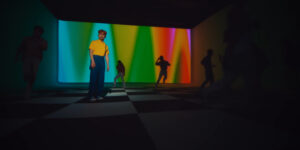
Narrative-wise, the MV starts to deviate from a linear path after Sam’s abduction. It instead shows Sam appearing in several abstract locations such as the initial room, only bathed in deeper hues, and a psychedelic space where Sam runs continually. Most notably is a liminal room with a monochromatic floor and a color-changing wall. As Sam stands out of place in the middle of the room, figures dance at a distance and interestingly, he slowly starts to mimic them. This could be expressing his conflicting desire to stay despite it all, like the lines “Yeah you wanting to stay … Why keep running away” subtly hint. Is his choice in this liminal space to stay?
Ultimately, it’s unclear whether Sam escapes in the MV, due to the happy ending. The dance break ends the MV on a high note with Sam posing like a superstar, and the lyrics add a sense of empowerment:
I got good looks and I look clean
Don’t you look back and don’t you mind me
What’s the use
What’s the juice
But judging by how the same saccharine colors are used, the ending suggests a compromise of staying while also making the best out of it. While being confined to the constructed set, Sam is still able to dance freely in a large open space as compared to the earlier claustrophobic walls. Yet could it otherwise mean that his getaway throughout the MV has finally come to an end, and it’s back to showtime? A sinister entrapment underneath the positivity?
Either way, packaging the desire of being alone or the suffocating expectations of others in a vibrant performance may seem like a clash. But arguably, the vibrancy of the whole song helps to add color to what could easily be a downer. It makes this sentiment of being exhausted more palatable, and even empowers listeners who may feel the same way while assuring them that they are not alone. Like the song, the MV balances both groovy vibes and suffocating sentiments expertly. Ultimately, “The Juice” presents a simple but relatable sentiment nuancedly, in its lyrics, instruments, and visuals. The audience is kept entertained throughout the song and MV with something new around each corner—playing with melodies, Sam’s adlibs, rapping verse, instances of pull-back that allow the music to shine, and of course his dance break, all of which serve to add color to the song.
(Youtube [1][2][3]. Lyrics via Popgasa. Images via Antenna.)
